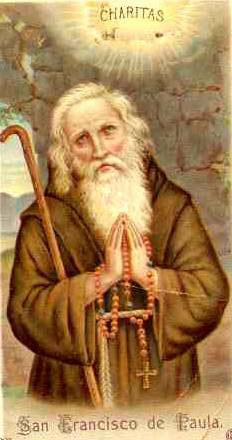We ask you, urgently: don't scroll past this
Dear readers, Catholic Online was de-platformed by Shopify for our pro-life beliefs. They shut down our Catholic Online, Catholic Online School, Prayer Candles, and Catholic Online Learning Resources essential faith tools serving over 1.4 million students and millions of families worldwide. Our founders, now in their 70's, just gave their entire life savings to protect this mission. But fewer than 2% of readers donate. If everyone gave just $5, the cost of a coffee, we could rebuild stronger and keep Catholic education free for all. Stand with us in faith. Thank you.Help Now >
Alvar Nuñez Cabeza de Vaca
FREE Catholic Classes
Born at Jerez de la Frontera in Andalusia, Spain ; dates of birth and death uncertain.
The family were originally peasants and called themselves Alhaja until after the battle of Las Navas de Tolosa (11 July, 1212), when they were ennobled for service that contributed to the important victory which the kings of Castile, Aragon, and Navarre achieved over the Moors. One of the Alhajas informed the Christians of a mountain pass by which the position of the Arabs could be turned, and indicated the entrance by placing the skull of a cow near it. Hence the change of name and the coat of arms.
Alvar Nuñez joined the expedition of Pámfilo de Narvaez to Florida in 1526 as treasurer. With two other Spaniards and an Arab Moor, he was the only survivor who remained on the mainland. For eight years they roamed along the coasts of Louisiana and Texas under the greatest of hardships, their position among the Indians being wellnigh intolerable. In utter despair, Cabeza de Vaca at last tried his scanty knowledge of medicine and, his cures proving successful, he became a renowned medicine man among the natives, his companions following the example. The treatment to which they resorted partook of the nature of a faith-cure. He declares the sign of the cross to be a seldom-failing remedy. The belief of the outcasts in miracles was sincere, while acknowledging that they also employed indigenous Indian remedies with simple Christian religious ceremonials. After nine years they reached the Pacific coast in Sonora, Mexico, thus being the first Europeans to travel across the North American continent. Cabeza de Vaca arrived at the city of Mexico in 1536. He was also the first European who saw and described the American bison or buffalo. But the wanderers did not, as had been supposed, see the New Mexican pueblos. They only heard of them.
Returning to Spain in 1537, he obtained the post of Governor of the La Plata regions (Argentina), whither he went in 1541. Cabeza de Vaca was a trustworthy subaltern, but not fit for independent command. His men rebelled against him in 1543, took him prisoner, and sent him to Spain, where for eight years he was kept in mild captivity. The date of his death is not known, but it is stated that he ended his days at Seville, where he occupied an honourable and modestly lucrative position in connection with the American trade.
He wrote two works. One is the story of his first trials in America as a member of the expedition of Narvaez, which was published at Zamora in 1542, and is known under the title of Naufragios (reprinted 1555 and several times translated into English); the other is on his career in South America (published 1555) and called Comentarios . Both are valuable for the history of Spanish colonization, the former also for the customs and manners of North American Indians .
There is hardly a work on the history of North America extant that does not allude, more or less correctly, to Cabeza de Vaca, and the same may be stated in regard to histories of Argentina and Paraguay. The earliest publications are of course those written by himself, his La Relacion que dio Aluar Nuñez Cabeza de Vaca de lo acaescido en las Indians en la armada donde yua por gouernador Pamphilo de Narbaez etc. (Zamora, 1542), only two copies of which are known to exist, and La Relacion y comentarios del gouernador Aluar Nuñez Cabeza de Vaca (Valladolid, 1555).
Join the Movement
When you sign up below, you don't just join an email list - you're joining an entire movement for Free world class Catholic education.

-

- Stations of the Cross
- Easter / Lent
- 5 Lenten Prayers
- Ash Wednesday
- Living Lent
- 7 Morning Prayers
- Mysteries of the Rosary
- Litany of the Bl. Virgin Mary
- Popular Saints
- Popular Prayers
- Female Saints
- Saint Feast Days by Month
- Pray the Rosary
Pope Francis’ April Prayer Intention: Using Technology to Strengthen Human Connections
Finding Peace Through Prayer in a World of Worry
Trump Administration Withholds Federal Grants from Planned Parenthood Over DEI and Civil Rights Concerns
Daily Catholic
 Daily Readings for Wednesday, April 02, 2025
Daily Readings for Wednesday, April 02, 2025 St. Francis of Paola: Saint of the Day for Wednesday, April 02, 2025
St. Francis of Paola: Saint of the Day for Wednesday, April 02, 2025 Prayer for God's Help in Daily Actions: Prayer of the Day for Friday, March 14, 2025
Prayer for God's Help in Daily Actions: Prayer of the Day for Friday, March 14, 2025 Daily Readings for Tuesday, April 01, 2025
Daily Readings for Tuesday, April 01, 2025 St. Hugh of Grenoble: Saint of the Day for Tuesday, April 01, 2025
St. Hugh of Grenoble: Saint of the Day for Tuesday, April 01, 2025- To Perceive Animals as God's Gifts: Prayer of the Day for Thursday, March 13, 2025
![]()
Copyright 2025 Catholic Online. All materials contained on this site, whether written, audible or visual are the exclusive property of Catholic Online and are protected under U.S. and International copyright laws, © Copyright 2025 Catholic Online. Any unauthorized use, without prior written consent of Catholic Online is strictly forbidden and prohibited.
Catholic Online is a Project of Your Catholic Voice Foundation, a Not-for-Profit Corporation. Your Catholic Voice Foundation has been granted a recognition of tax exemption under Section 501(c)(3) of the Internal Revenue Code. Federal Tax Identification Number: 81-0596847. Your gift is tax-deductible as allowed by law.


 Daily Readings for Wednesday, April 02, 2025
Daily Readings for Wednesday, April 02, 2025 St. Francis of Paola: Saint of the Day for Wednesday, April 02, 2025
St. Francis of Paola: Saint of the Day for Wednesday, April 02, 2025 Prayer for God's Help in Daily Actions: Prayer of the Day for Friday, March 14, 2025
Prayer for God's Help in Daily Actions: Prayer of the Day for Friday, March 14, 2025 St. Hugh of Grenoble: Saint of the Day for Tuesday, April 01, 2025
St. Hugh of Grenoble: Saint of the Day for Tuesday, April 01, 2025

